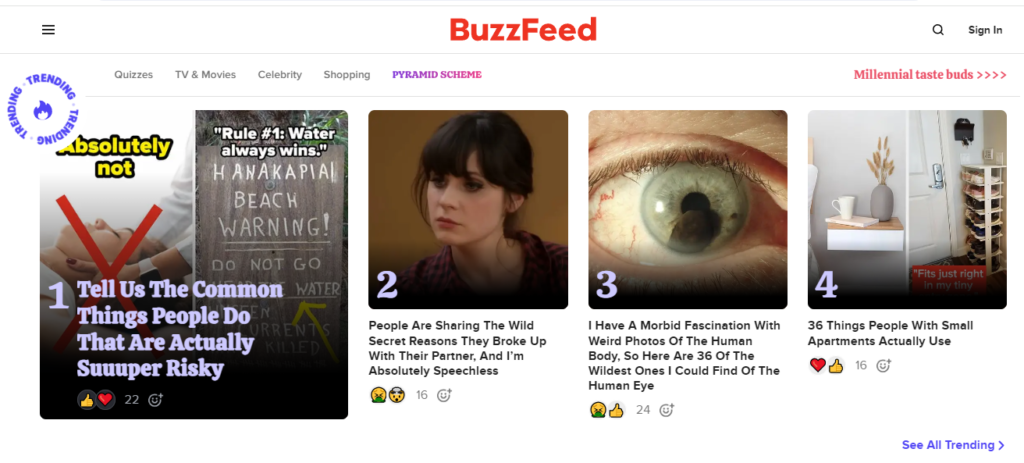Using the right tone for your content can make or break your audience’s engagement. Imagine investing time and effort into creating content only to find it falls flat because the tone doesn’t resonate with your readers. This mismatch can lead to confusion, disengagement, and even loss of credibility. So, what tones should you use when developing content to avoid these pitfalls? In this article, I’ll guide you through selecting the perfect tone for your content, helping you connect authentically with your audience and drive meaningful engagement.
Table of Contents
ToggleWhat is the Tone of the Content?
The tone of the content is the mood or attitude conveyed through the writing. It reflects how you communicate your message and impacts how readers feel about it. Whether it’s friendly, professional, or humorous, the tone should align with your audience’s expectations and the purpose of your content.

What is the importance of choosing the right tone for content?
Choosing the right tone for your content is crucial because it directly affects how your audience perceives and engages with your message. The tone helps to convey the brand’s personality, build a connection with the audience, and achieve specific communication goals. An appropriate tone can enhance readability, drive engagement, and establish trust, while an inappropriate tone may lead to misunderstandings or disengagement.

The tone in content is like the background music in a movie—it subtly influences how your audience feels about the information presented. It’s not just what you say but how you say it that resonates with your audience. For instance, a formal tone might be appropriate for legal documents, but the same tone could alienate readers in a casual blog post.
Types of Tones in Content Writing: What Tones Should You Use When Developing Content?

Choosing the right tone depends on your audience and the message you want to convey. Here are some common tones and when to use them:
1. Friendly:
A warm and inviting tone that makes your audience feel welcomed and valued. Ideal for brands that aim to build a personal connection, like family-oriented or lifestyle brands. This tone will help you create a sense of trust and loyalty, making your audience feel like they’re part of a community.
Example: Welcome to our little corner of the internet! Whether you’re looking for tips on family fun or just need a place to refresh, you’re in the right spot. Grab a cup of coffee, and let’s make some memories together!
2. Formal:
A professional and authoritative tone, suitable for content where accuracy and precision are essential, such as legal documents or academic papers. This tone establishes credibility and will ensure your audience takes your content seriously, reinforcing your expertise.
Example: In accordance with the guidelines described in the contract, all parties are required to adhere strictly to the terms and conditions outlined. Any deviations will result in penalties as prescribed by law.
3. Conversational:
An informal tone that mimics everyday speech. Perfect for blogs, social media posts, or any content where you want to engage readers in a relaxed, approachable manner. This tone makes your content feel like a friendly chat, encouraging interaction and building rapport.
Example: So, you’re thinking about starting a blog? That’s awesome! Let me walk you through the basics—it’s easier than you might think, and I’ll be here to help every step of the way.
4. Informative:
A straightforward and factual tone, great for educational content, tutorials, or how-to guides where clarity is key. This tone ensures that your audience receives the information they need clearly and concisely, making your content both useful and trustworthy.
Example: To change a flat tyre, first, ensure your vehicle is on a flat surface and secure the emergency brake. Then, use a jack to lift the car off the ground, and remove the lug nuts before taking off the tyre. Follow these steps to replace it with the spare.
5. Inspirational:
A motivating and encouraging tone that inspires your audience to take action or believe in something greater. Effective in personal development, wellness, or motivational content. This tone can uplift your audience, driving them to achieve their goals and dreams with renewed energy.
Example: You have the power to shape your destiny. Every step you take brings you closer to your dreams—don’t be afraid to reach for the stars. Believe in yourself, and you can achieve anything you set your mind to.
6. Humorous:
A light-hearted tone that makes your content relatable and enjoyable. Best used in entertainment blogs or social media posts where humour is appropriate. This tone will add a fun element to your content, making it memorable and shareable while also keeping your audience engaged.
Example: If procrastination burned calories, we’d all be supermodels by now. But since it doesn’t, let’s tackle that to-do list together and actually get stuff done—without the stress!
7. Informal:
An informal tone in content writing is relaxed, conversational, and friendly. It’s like talking to a friend or a close acquaintance, often using everyday language, contractions, and a casual style. This tone helps create a connection with the audience by making the content feel approachable and relatable.
Example: Hey there! Looking to give your social media game a supercharge? No worries, I’ve got you covered. Let’s make your brand shine and have some fun while we’re at it!
8. Authoritative:
An authoritative tone is confident, knowledgeable, and often used to establish expertise. It’s direct and assertive, positioning the writer or brand as a trusted source of information. This tone is commonly used in content that aims to educate or guide the reader, such as how-to guides, industry insights, or expert opinions.
Example: To succeed in today’s competitive market, it’s essential to adopt a strong social media strategy. With years of experience, I provide insights that have consistently driven measurable results for my clients.
9. Professional:
A professional tone is formal, respectful, and polished. It’s used in business communication or content that requires a sense of seriousness and credibility. This tone avoids slang or overly casual language, focusing on clear, concise, and well-structured sentences to convey information effectively.
Example: Our services are designed to meet the highest standards of quality and professionalism. We work diligently to understand your business needs and deliver content that aligns with your strategic objectives.
10. Empathetic:
An empathetic tone shows understanding, compassion, and sensitivity to the reader’s emotions or situation. It’s often used in content that addresses challenges, offers support, or provides solutions. This tone helps build trust by showing that the writer genuinely cares about the reader’s experience and feelings.
Example: We understand how challenging it can be to manage your brand’s online presence while handling other responsibilities. That’s why I’m here to support you every step of the way, ensuring your content truly reflects your brand’s voice and connects with your audience.
How to Choose the Right Tone of Content? What Tones Should You Use When Developing Content?
When developing content, you must align your tone with your brand’s personality and the emotions you want to induce in your readers. The tone reflects your brand’s attitude and should be consistent across all types of content, different from your brand’s voice, representing its overall personality.

Below are some important steps to consider:
1. Know Your Audience:
Understanding who you’re writing for is important. Designing your tone to match your audience’s expectations helps in building a strong connection. Get to know their preferences, pain points, and what resonates with them to make your content feel more personal and engaging.
For instance, if your audience is young and tech-savvy, an informal and conversational tone might be more appealing. Conversely, if you’re addressing professionals in a formal industry, a more authoritative and professional tone will be appropriate.
2. Define Your Brand’s Personality:
Your tone should reflect your brand’s voice. If your brand is innovative and cutting-edge, your tone should be energetic and confident. Make sure your content consistently mirrors your brand’s identity so your audience instantly recognizes your unique style.
3. Consider the Content-Type:
Different types of content require different tones. A product description might need a straightforward tone, while a blog post could benefit from a more conversational approach. Matching the tone to the content type ensures that your message is written as intended and keeps your audience engaged.
4. Be Consistent:
While your tone may vary slightly depending on the content type, maintaining consistency across all channels builds trust and makes your brand recognizable. A consistent tone helps your audience develop a sense of familiarity and reliability with your content.
5. Test and Adapt:
Experiment with different tones and see how your audience responds. A/B testing can help determine which tone resonates best. Don’t be afraid to tweak your content based on feedback; adapting to your audience’s needs can improve your content’s impact.
Tips for Using the Right Tone of Content: What Tones Should You Use When Developing Content?
Once you’ve identified the tone that best suits your brand and content, here are some tips to ensure it’s effectively implemented:
1. Document Your Tone of Voice:
Create a tone of voice guide as part of your content strategy. This guide should include examples and guidelines on how to use different tones across various content types.
2. Train Your Team:
Ensure that the team involved in your content creation process understands the importance of tone and knows how to apply it consistently. This helps prevent mixed messages and maintains a unified brand image.
3. Use Technology to Assist:
Tools like tone checkers or content management software can help ensure your content adheres to your brand’s tone guidelines. This can save you time and help maintain consistency.
4. A/B Test:
Testing different tones on similar content pieces can help you understand which one resonates most with your audience. Use the results to refine your tone guidelines. Pay attention to how your audience reacts to your content. Adjust your tone based on this feedback to ensure it continues to resonate.
5. Consider the Emotional Impact
Choose a tone that supports the emotional goals of your content. For example, use an empathetic tone for content aimed at providing support or comfort and an inspirational tone for motivational pieces.
A well-chosen tone can enhance emotional engagement and strengthen the connection between your brand and your audience. Craft your content to evoke the desired emotional response.
6. Use Tone Appropriately:
Be mindful of the context in which you use different tones. While humour can be a great way to engage readers, it might not be suitable for all topics or audiences. Similarly, while a professional tone is important for credibility, it should not come across as cold or impersonal. Use your tone thoughtfully to enhance the reader’s experience without compromising the content’s effectiveness.
7. Incorporate Brand Personality:
Infuse your content with your brand’s unique personality. Whether your brand is known for its humour, expertise, or friendliness, let this personality shine through in your tone. This not only helps in differentiating your brand but also in creating a more authentic connection with your audience.
8. Monitor Trends and Adjust:
Stay updated with industry trends and shifts in audience preferences. Social media trends, cultural changes, and evolving industry standards can impact the effectiveness of your tone. Be flexible and willing to adjust your tone to stay relevant and engaging in your industry

Need More Help with What Tones Should You Use When Developing Content? Hire a Professional Brand Voice Expert.
Choosing the right tone for your content is crucial in connecting with your audience and establishing your brand identity. Whether you’re looking to establish a friendly, professional, authoritative, or conversational tone, I can guide you through the process. With over four years of experience as a professional content writer, I specialize in helping brands find their unique voice and communicate effectively with their target audience.
If you’re unsure about which tone suits your brand best or need assistance in refining your content strategy, don’t hesitate to reach out to me.
Conclusion: What Tones Should You Use When Developing Content?
Choosing the right tone for your content is critical to effective communication. What tones should you use when developing content? It influences how your audience gets your message and helps build a strong connection between your brand and its followers. Whether you’re aiming for a friendly, professional, humorous, or conversational tone, the key is to align it with your audience’s expectations and your brand’s identity.
Want to share your experiences with finding the right tone for your content? Leave a comment below!
FAQs: What Tones Should You Use When Developing Content?
1. How do you develop a good tone?
Developing a good tone starts with understanding your audience and brand. Think about how you want your readers to feel and match your tone to that emotion. Stay consistent across all your content and refine your tone by getting feedback and making adjustments based on what works best.
2. How do you decide what tone of voice to write in content writing?
Deciding on the tone involves knowing your audience and your brand’s personality. Consider what kind of mood or reaction you want to call up. Match the tone to the content type—whether it’s formal for business or casual for blogs. Test different tones and use feedback to perfect your approach.
3. Can I use multiple tones in a single piece of content?
Yes, you can use multiple tones within a single piece of content, but it should be done carefully. For instance, a blog post might start with an empathetic tone to address a common problem and then shift to an authoritative tone to provide solutions and expert advice. The key is to ensure that the transitions between tones are smooth and that they align with the content’s objectives and audience expectations.
4. Are there any pitfalls to avoid when selecting a tone for content?
Yes, some common pitfalls to avoid include:
- Inconsistency: Switching tones abruptly or inconsistently can confuse your audience.
- Misalignment: Choosing a tone that does not match your brand’s voice or audience expectations can undermine your message.
- Overuse of Humor: While humour can be engaging, overusing it in inappropriate contexts can detract from your message’s credibility and effectiveness.
5. How do I handle tone adjustments if my audience or brand strategy changes?
If your audience or brand strategy changes, revisit and update your tone guidelines to reflect these shifts. Conduct new audience research to understand their current preferences and adjust your tone to better align with their expectations. Regularly review, analyze and update your content strategy to ensure that your tone remains effective and relevant in light of any changes.















